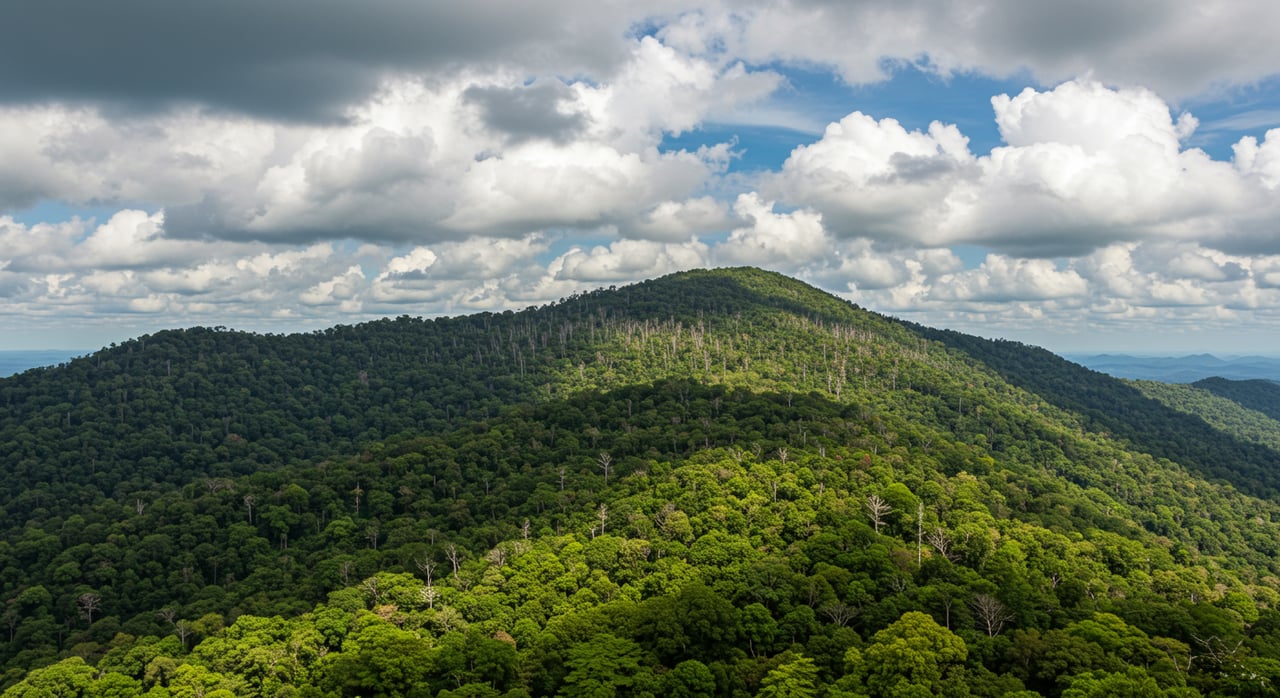Most North Carolinians are familiar with the enormous stretch – over 800 square miles – of the Great Smoky Mountains National Park, located at the southern end of the Appalachians between North Carolina and Tennessee. An area blessed with some of the most beautiful and diverse forest land in the world, this incredible area is also the most visited park in the United States, and a UNESCO World Heritage Site!
What is a UNESCO World Heritage Site?
It is the goal of UNESCO – the United Nations’ Educational, Scientific and Cultural Organization – to build world peace through the cooperation of potentially all nations in the areas of education, science and culture. From the organization’s founding, over 75 years ago, UNESCO has worked to unite people from all parts of the world through the idea, or ideal, of a shared planet and common heritage.
A grand total of 1,154 properties worldwide have been designated as World Heritage Sites, the first being the Galapagos Islands in 1978 and the most recent, Greece’s Archaeological Site of Philippi. 897 out of those 1,154 global sites are classified as Cultural, 218 are Natural, and 39 are Mixed heritage sites, which represent elements of each of the other two categories. Within the U.S., eleven of these monumental sites are national parks, including, of course, the magnificent Great Smoky Mountains National Park, which became a UNESCO World Heritage Site in 1983.
In order to be selected as a World Heritage Site, a destination must qualify by fulfilling at least one out
of a list of ten requirements.
- The site “represents a masterpiece of human creative genius.”
- It exhibits a display of human values on developments in architecture or technology, monumental arts or landscape design.
- It bears testimony to a cultural tradition or civilization which is living or has disappeared.
- The site illustrates a period of history in its building, technology or landscapes.
- It is an example of a traditional human settlement and its interaction with the environment.
- The site is associated with ideas, beliefs, literary or artistic works of outstanding significance.
- The site represents exceptional natural beauty.
- It represents major stages of the history of our Earth, including geological processes and features.
- The site displays ecological and biological processes in plants and animal life, both terrestrial and coastal/marine ecosystems.
- It is a place in which threatened species are conserved, and the area’s biological diversity is significant.
The Great Smoky Mountains National Park: a UNESCO World Heritage Site since 1983
Under these guidelines, UNESCO qualified the Great Smoky Mountains National Park as a potential World Heritage Site based on several criteria: the area’s exceptional natural beauty; its importance as one of the largest of the Arcto-Tertiary geoflora era land masses (a zone that once stretched throughout the northern hemisphere during the pre-Ice Age Cenozoic era), which shows us how this area of the planet looked even before the existence of humans; and the fact that it is one of the most diverse and rich regions of the world, biologically-speaking. Interestingly, one statistic scientists sometimes use in order to determine the overall health of a region is the number of salamander species that exist there; in the Great Smoky Mountains National Park, there are an incredible 30 documented species.
Threats to the Environment, and How the Park is Monitored
Air pollution, of course, from outside the boundaries of the park, threatens to potentially harm the environment, as do invasive plant species – garlic mustard, kudzu, Japanese honeysuckle and more – and non-native insects which are specific threats to the area’s hemlock, fir and ash species. Several animal species – among them, non-native wild hogs and non-native trout – can also potentially have a very negative impact on the region, which is one of the largest forest ecosystems in the southern Appalachians, and one of the most massive old-growth forests in the U.S.
The United States Park Service, established in 1916, manages the Great Smoky Mountains National Park, and several federal laws – including the Clean Air Act – have been put into effect to protect its resources, too. What is known as the General Management Plan has also been put into place with plans for protecting the environment and dealing with specific issues and topics including zoning, ecological integrity, the monitoring of visitors, and education programs to deal with concerns such as air quality and non-native plant and animal species.










